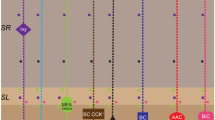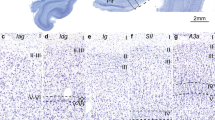Abstract
γ-Aminobutyric acid (GABA) is an inhibitory transmitter, acting on receptor channels to reduce neuronal excitability in matured neural systems. However, electrophysiological responses of whole neuronal ensembles to the exposure to GABA are still unclear. We used micro-electrode arrays (MEAs) to study the effects of the increasing amount of GABA on functional network of cortical neural cultures. Then the recorded data were analyzed by the cross-covariance analysis and graph theory. Results showed that after the GABA treatment, the activity parameters of firing rate, bursting rate, bursting duration and network burst frequency in neural cultures decreased as expected. In addition, the functional connectivity also decreased in similarity, network density, and the size of the largest component. However, small-worldness was not found to be influenced by the acute GABA treatment. Our results support the position that using graph theory to evaluate the functional connectivity of neural cultures may enhance understanding of the pharmacological impact of neurotransmitters on neuronal networks.






Similar content being viewed by others
References
Gross GW, Williams AN, Lucas JH (1982) Recording of spontaneous activity with photoetched microelectrode surfaces from mouse spinal neurons in culture. J Neurosci Methods 5(1–2):13–22
Potter SM, DeMarse TB (2001) A new approach to neural cell culture for long-term studies. J Neurosci Methods 110(1–2):17–24
Gramowski A, Jugelt K, Weiss DG, Gross GW (2004) Substance identification by quantitative characterization of oscillatory activity in murine spinal cord networks on microelectrode arrays. Eur J Neurosci 19(10):2815–2825
Streit J (1993) Regular oscillations of synaptic activity in spinal networks in vitro. J Neurophysiol 70(3):871–878
Gramowski A, Schiffmann D, Gross GW (2000) Quantification of acute neurotoxic effects of trimethyltin using neuronal networks cultured on microelectrode arrays. Neurotoxicology 21(3):331–342
Martinoia S, Bonzano L, Chiappalone M, Tedesco M, Marcoli M, Maura G (2005) in vitro cortical neuronal networks as a new high-sensitive system for biosensing applications. Biosens Bioelectron 20(10):2071–2078
Gross GW, Harsch A, Rhoades BK, Gopel W (1997) Odor, drug and toxin analysis with neuronal networks in vitro: extracellular array recording of network responses. Biosens Bioelectron 12(5):373–393
Morefield SI, Keefer EW, Chapman KD, Gross GW (2000) Drug evaluations using neuronal networks cultured on microelectrode arrays. Biosens Bioelectron 15(7–8):383–396
Keefer EW, Norton SJ, Boyle NA, Talesa V, Gross GW (2001) Acute toxicity screening of novel AChE inhibitors using neuronal networks on microelectrode arrays. Neurotoxicology 22(1):3–12
Xia Y, Gross GW (2003) Histiotypic electrophysiological responses of cultured neuronal networks to ethanol. Alcohol 30(3):167–174
Parviz M, Gross GW (2007) Quantification of zinc toxicity using neuronal networks on microelectrode arrays. Neurotoxicology 28(3):520–531
Gross GW, Rhoades BK, Azzazy HM, Wu MC (1995) The use of neuronal networks on multielectrode arrays as biosensors. Biosens Bioelectron 10(6–7):553–567
Leinekugel X, Khazipov R, Cannon R, Hirase H, Ben-Ari Y, Buzsaki G (2002) Correlated bursts of activity in the neonatal hippocampus in vivo. Science 296(5575):2049–2052
Khazipov R, Esclapez M, Caillard O, Bernard C, Khalilov I, Tyzio R, Hirsch J, Dzhala V, Berger B, Ben-Ari Y (2001) Early development of neuronal activity in the primate hippocampus in utero. J Neurosci 21(24):9770–9781
Marom S, Shahaf G (2002) Development, learning and memory in large random networks of cortical neurons: lessons beyond anatomy. Q Rev Biophys 35(1):63–87
Harris KD, Csicsvari J, Hirase H, Dragoi G, Buzsaki G (2003) Organization of cell assemblies in the hippocampus. Nature 424(6948):552–556
Morin FO, Takamura Y, Tamiya E (2005) Investigating neuronal activity with planar microelectrode arrays: achievements and new perspectives. J Biosci Bioeng 100(2):131–143
Tateno T, Kawana A, Jimbo Y (2002) Analytical characterization of spontaneous firing in networks of developing rat cultured cortical neurons. Phys Rev E Stat Nonlin Soft Matter Phys 65(5 Pt 1):051924
Wagenaar DA, Pine J, Potter SM (2006) An extremely rich repertoire of bursting patterns during the development of cortical cultures. BMC Neurosci 7:11
Beggs JM, Plenz D (2004) Neuronal avalanches are diverse and precise activity patterns that are stable for many hours in cortical slice cultures. J Neurosci 24(22):5216–5229
Chiappalone M, Vato A, Berdondini L, Koudelka-Hep M, Martinoia S (2007) Network dynamics and synchronous activity in cultured cortical neurons. Int J Neural Syst 17(2):87–103
Segev R, Baruchi I, Hulata E, Ben-Jacob E (2004) Hidden neuronal correlations in cultured networks. Physical Rev Lett 92(11):118102
Baruchi I, Ben-Jacob E (2007) Towards neuro-memory-chip: imprinting multiple memories in cultured neural networks. Phys Rev E Stat Nonlin Soft Matter Phys 75(5 Pt 1):050901
Raichman N, Ben-Jacob E (2008) Identifying repeating motifs in the activation of synchronized bursts in cultured neuronal networks. J Neurosci Methods 170(1):96–110
Rubinov M, Sporns O (2010) Complex network measures of brain connectivity: uses and interpretations. Neuroimage 52(3):1059–1069
Srinivas KV, Jain R, Saurav S, Sikdar SK (2007) Small-world network topology of hippocampal neuronal network is lost, in an in vitro glutamate injury model of epilepsy. Eur J Neurosci 25(11):3276–3286
Downes JH, Hammond MW, Xydas D, Spencer MC, Becerra VM, Warwick K, Whalley BJ, Nasuto SJ (2012) Emergence of a small-world functional network in cultured neurons. PLoS Comput Biol 8(5):e1002522
Vincent K, Tauskela JS, Mealing GA, Thivierge JP (2013) Altered network communication following a neuroprotective drug treatment. PLoS ONE 8(1):e54478
Schroeter MS, Charlesworth P, Kitzbichler MG, Paulsen O, Bullmore ET (2015) Emergence of rich-club topology and coordinated dynamics in development of hippocampal functional networks in vitro. J Neurosci 35(14):5459–5470
Bettencourt LM, Stephens GJ, Ham MI, Gross GW (2007) Functional structure of cortical neuronal networks grown in vitro. Phys Rev E Stat Nonlin Soft Matter Phys 75(2 Pt 1):021915
Szabo TM, Caplan JS, Zoran MJ (2010) Serotonin regulates electrical coupling via modulation of extrajunctional conductance: H-current. Brain Res 1349:21–31
Hogberg HT, Sobanski T, Novellino A, Whelan M, Weiss DG, Bal-Price AK (2011) Application of micro-electrode arrays (MEAs) as an emerging technology for developmental neurotoxicity: evaluation of domoic acid-induced effects in primary cultures of rat cortical neurons. Neurotoxicology 32(1):158–168
Schmidt SL, Chew EY, Bennett DV, Hammad MA, Frohlich F (2013) Differential effects of cholinergic and noradrenergic neuromodulation on spontaneous cortical network dynamics. Neuropharmacology 72:259–273
Tang-Schomer MD, Davies P, Graziano D, Thurber AE, Kaplan DL (2014) Neural circuits with long-distance axon tracts for determining functional connectivity. J Neurosci Methods 222:82–90
Defranchi E, Novellino A, Whelan M, Vogel S, Ramirez T, van Ravenzwaay B, Landsiedel R (2011) Feasibility assessment of micro-electrode chip assay as a method of detecting neurotoxicity in vitro. Front Neuroeng 4:6.
Tang R, Pei W, Chen S, Zhao H, Chen Y, Han Y, Wang C, Chen H (2014) Fabrication of strongly adherent platinum black coatings on microelectrodes array. Sci China. Inf Sci 57(4):1–10
Yao H, Rongyu T, Jin Z, Qiuxia L, Zhiqiang L, Weizhen C, Cuimi D, Chunlan W, Changyong W (2012) The design and fabrication of microelectrode array (MEA) and multichannel electrophysiology system. J Biomed Eng Res 31(04):214–219
Chiappalone M, Novellino A, Vajda I, Vato A, Martinoia S, van Pelt J (2005) Burst detection algorithms for the analysis of spatio-temporal patterns in cortical networks of neurons. Neurocomputing 65–66 (0):653–662
Wagenaar DA, DeMarse TB, Potter SM (2005) MeaBench: A toolset for multielectrode data acquisition and on-line analysis. Proc 2nd Int IEEE EMBS Conf Neural Eng, Arlington
Aertsen AM, Gerstein GL (1985) Evaluation of neuronal connectivity: sensitivity of cross-correlation. Brain Res 340(2):341–354
Sun JJ, Kilb W, Luhmann HJ (2010) Self-organization of repetitive spike patterns in developing neuronal networks in vitro. Eur J Neurosci 32(8):1289–1299
Maccione A, Garofalo M, Nieus T, Tedesco M, Berdondini L, Martinoia S (2012) Multiscale functional connectivity estimation on low-density neuronal cultures recorded by high-density CMOS micro electrode arrays. J Neurosci Methods 207(2):161–171
de la Rocha J, Doiron B, Shea-Brown E, Josic K, Reyes A (2007) Correlation between neural spike trains increases with firing rate. Nature 448(7155):802–806
Humphries MD, Gurney K (2008) Network ‘small-world-ness’: a quantitative method for determining canonical network equivalence. PLoS ONE 3(4):e0002051
Watts DJ, Strogatz SH (1998) Collective dynamics of ‘small-world’ networks. Nature 393(6684):440–442
Jimbo Y, Robinson HP, Kawana A (1998) Strengthening of synchronized activity by tetanic stimulation in cortical cultures: application of planar electrode arrays. IEEE Trans Biomed Eng 45(11):1297–1304
Jimbo Y, Tateno T, Robinson HP (1999) Simultaneous induction of pathway-specific potentiation and depression in networks of cortical neurons. Biophys J 76(2):670–678
Tang R, Zhang G, Weng X, Han Y, Lang Y, Zhao Y, Zhao X, Wang K, Lin Q, Wang C (2016) In vitro assessment reveals parameters-dependent modulation on excitability and functional connectivity of cerebellar slice by repetitive transcranial magnetic stimulation. Sci Rep 6:23420
Teller S, Tahirbegi IB, Mir M, Samitier J, Soriano J (2015) Magnetite-Amyloid-beta deteriorates activity and functional organization in an in vitro model for Alzheimer’s disease. Sci Rep 5:17261
Wang XJ, Kennedy H (2016) Brain structure and dynamics across scales: in search of rules. Curr Opin Neurobiol 37:92–98
Ypma RJ, Bullmore ET (2016) Statistical analysis of tract-tracing experiments demonstrates a dense, complex cortical network in the mouse. PLoS Comput Biol 12(9):e1005104
van den Heuvel MP, Kahn RS, Goni J, Sporns O (2012) High-cost, high-capacity backbone for global brain communication. Proc Natl Acad Sci USA 109(28):11372–11377
van den Heuvel MP, Sporns O (2011) Rich-club organization of the human connectome. J Neurosci 31(44):15775–15786
Rubenstein JL, Merzenich MM (2003) Model of autism: increased ratio of excitation/inhibition in key neural systems. Genes Brain Behavior 2(5):255–267
Acknowledgements
The authors thank CL Wang for cell culturing. Dr. Duan Qing is highly appreciated for his hardworking efforts in editing the paper, including help with syntax, grammar, and word usage.
Funding
This study is supported by the National Key Research and Development Program of China (No.2016YFC1101303), International Cooperation and Exchange of the National Natural Science Foundation of China (No. 31320103914) and National Natural Science Funds for Outstanding Young Scholar (No. 81622027).
Author information
Authors and Affiliations
Corresponding authors
Ethics declarations
Conflict of interest
The authors declare that there are no conflicts of interest.
Rights and permissions
About this article
Cite this article
Han, Y., Li, H., Lang, Y. et al. The Effects of Acute GABA Treatment on the Functional Connectivity and Network Topology of Cortical Cultures. Neurochem Res 42, 1394–1402 (2017). https://doi.org/10.1007/s11064-017-2190-3
Received:
Revised:
Accepted:
Published:
Issue Date:
DOI: https://doi.org/10.1007/s11064-017-2190-3




